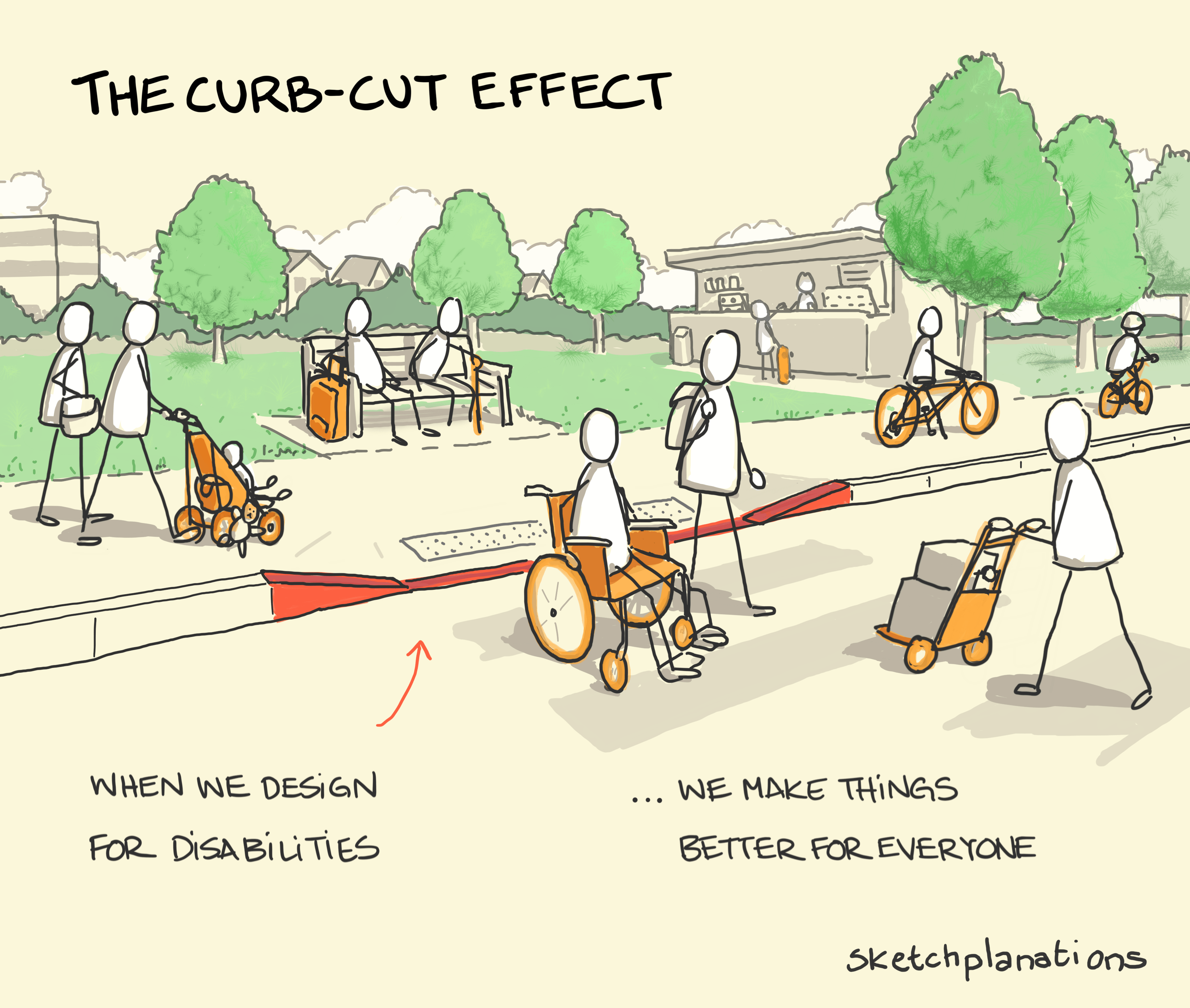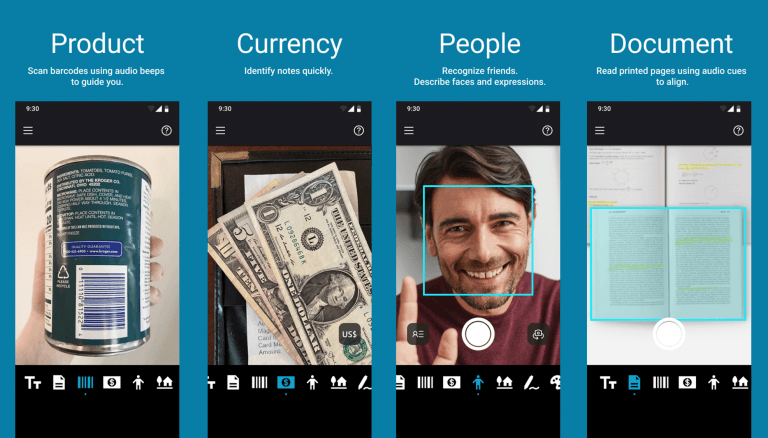Mobile applications play a central role in how we connect, communicate, and carry out everyday tasks. From banking and healthcare to education and entertainment, apps are an integral part of modern life. But for a significant portion of the population, accessing these services is not always straightforward.
Enter app accessibility—the design and development of mobile applications that can be used by people with varying abilities, including those with visual, auditory, motor, and cognitive impairments.
What Is Mobile-App Accessibility?
Mobile-app accessibility refers to the practice of ensuring that applications are usable by people with impairments. This involves catering to:
- Visual impairments (e.g. blindness, low vision, colour blindness).
- Auditory impairments (e.g. deafness, hard of hearing).
- Motor impairments (e.g. limited dexterity, paralysis).
- Cognitive impairments (e.g. dyslexia, memory difficulties).
To support these users within the context of this article, app developers should weave assistive technologies into every stage of design and development, ensuring the interface adapts intuitively to individual needs.
By building in features that automatically adjust visual contrast, text size and input methods, developers not only meet accessibility standards but also create an environment in which every user, regardless of ability, can navigate, understand and engage with the app effortlessly.
This empathetic approach transforms assistive tools from optional add-ons into seamless extensions of the user experience, reducing frustration, boosting confidence and fostering genuine digital inclusion.
Accessibility is not merely about accommodating a specific group of people; it benefits everyone.
Let’s look at the importance of app accessibility to your business, user experience and the betterment of your product:
1. Legal and Ethical Imperatives
In Malaysia, app accessibility is not just a best practice—it is a legal and moral obligation for businesses to adopt.
Persons with Disabilities Act 2008 (Act 685)
Under Sections 29–32, this Act guarantees the right of individuals with disabilities to access information and communication technology (ICT) on equal footing with others. This includes access to websites and mobile applications. The law reflects Malaysia’s intent to uphold the rights of people with disabilities in all areas of life.
Persons with Disabilities Act 2008 (Act 685)
Under Sections 29–32, this Act guarantees the right of individuals with disabilities to access information and communication technology (ICT) on equal footing with others. This includes access to websites and mobile applications. The law reflects Malaysia’s intent to uphold the rights of people with disabilities in all areas of life.
Persons with Disabilities Act 2008 (Act 685)
Under Sections 29–32, this Act guarantees the right of individuals with disabilities to access information and communication technology (ICT) on equal footing with others. This includes access to websites and mobile applications. The law reflects Malaysia’s intent to uphold the rights of people with disabilities in all areas of life.
Persons with Disabilities Act 2008 (Act 685)
Under Sections 29–32, this Act guarantees the right of individuals with disabilities to access information and communication technology (ICT) on equal footing with others. This includes access to websites and mobile applications. The law reflects Malaysia’s intent to uphold the rights of people with disabilities in all areas of life.
2. Expanding Your Audience
Investing in app accessibility is not just the right thing to do—it also makes business sense.
As the world’s population ages, more individuals will encounter age-related impairments, from reduced vision to arthritis. Additionally, temporary impairments—like a broken arm or eye strain—can affect anyone at any time.
Globally, the World Health Organisation (WHO) estimates that over 1 billion people live with some form of disability. In the mobile market, this represents a massive untapped user base. For instance, a report by Pew Research Centre found that 62% of adults with disabilities own a smartphone in the US—figures that are steadily rising in Southeast Asia as mobile penetration increases.
Ignoring accessibility means sidelining a considerable portion of potential users and revenue.
3. Improving User Experience for All
Accessibility improvements often enhance usability for everyone, not just those with disabilities.
- Clear layouts make it easier for all users to find and access content.
- Larger tap targets help reduce input errors and improve touch accuracy.
- Readable text and contrast support visibility in all lighting conditions.
- Keyboard navigation and shortcuts allow quicker, hands-free interaction.
- Consistent icons and labels make app features easier to recognise and use.
- Helpful error messages and tips guide users to complete tasks correctly.
Source: Sketchplanations
This is often referred to as the “curb-cut effect”—a reference to sidewalk ramps originally intended for wheelchair users that also benefit parents with prams, delivery personnel, and cyclists. In digital terms, features like closed captions not only assist the deaf community but also support users in noisy environments or silent offices.
Ultimately, accessible design is universal design.
4. Strengthening Brand Reputation
Source: Microsoft
Demonstrating a commitment to app accessibility is a strong signal of corporate social responsibility. It shows that a business values all users, regardless of ability.
Brands that prioritise accessibility often enjoy positive publicity, increased customer loyalty, and stronger word-of-mouth recommendations. Take Microsoft’s Seeing AI app or Apple’s continued investment in accessibility features—both companies are seen as leaders in tech, partly because of their inclusive approach.
Creating accessible apps is not just a back-end consideration; it’s a brand asset.
5. Driving Innovation and Competitive Advantage
Far from being a constraint, accessibility can drive innovation.
Designing for users with specific needs challenges developers to think creatively. The result is often features that improve functionality for everyone. For example:
- Google’s Live Transcribe started as a tool for the deaf but is now used widely for quick notes, language translation, and live meeting captions.
- Be My Eyes, an app connecting blind users with sighted volunteers, pioneered crowdsourced visual assistance and was featured as a game-changer in digital inclusion.
- Apple’s Voice Control, created for users with limited mobility, is now used by multitaskers and content creators who prefer hands-free control.
- Microsoft’s Immersive Reader, originally designed for users with dyslexia, improves reading comprehension for students and non-native speakers.
- WhatsApp’s voice notes offer an alternative for users with reading or writing difficulties, but have become widely popular for convenient messaging.
- Dark mode and high-contrast settings, developed for visual accessibility, are now mainstream for reducing eye strain and saving battery life.
- Captioning tools on platforms like Instagram and TikTok, designed for the hard of hearing, are now used by creators to boost engagement and reach.
Source: Digital Information World
Apps that lead with accessibility often gain a first-mover advantage, capturing loyalty and setting standards within their industries.
6. Financial Returns and Cost Savings
Making an app accessible from the outset is not only responsible—it’s financially savvy.
- Higher download rates by appealing to a broader and more diverse audience.
- Better engagement and retention as users find the app intuitive and easy to use.
- Fewer support tickets and reduced need for costly rework thanks to clear, inclusive design.
- Improved app ratings and reviews are driven by a smoother experience for all users.
- Increased customer loyalty as inclusive apps foster trust and long-term use.
- Lower legal risk by complying with accessibility laws and avoiding potential fines or lawsuits.
- Faster time to market in future updates since accessible foundations reduce complexity in scaling and iterating.
According to the Click-Away Pound Report 2019, digital inaccessibility poses a significant financial risk to businesses. The UK-based study found that 69% of users with accessibility needs will abandon a website or app if they encounter usability barriers, demonstrating how poor design directly impacts customer retention. This digital exclusion translates into a substantial economic loss. Furthermore, 86% of respondents stated they would be willing to spend more with companies that offer accessible services, highlighting a clear commercial incentive for businesses to prioritise inclusive app design.
Accessibility is an investment that pays dividends.
Final Takeaways
App accessibility is not an optional feature—it’s a foundational aspect of good design, legal compliance, ethical business, and user-centred development. By creating inclusive mobile experiences, we not only uphold the rights of individuals with disabilities but also unlock broader market potential, enhance user satisfaction, and future-proof our digital products.
Now is the time to act: Audit your app, listen to your users, and embed inclusion into every pixel and line of code. Because accessibility is not just about technology—it’s about people.



